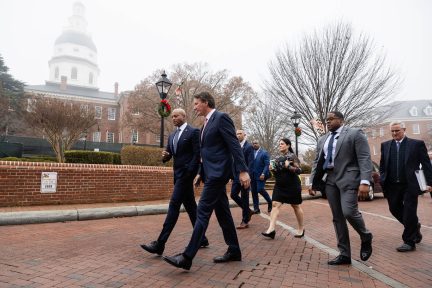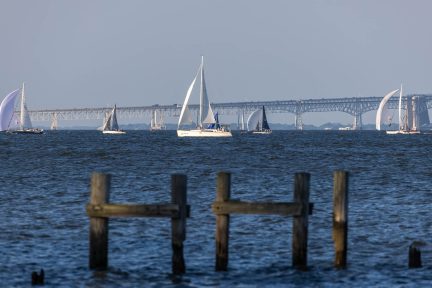Chesapeake Executive Council Discusses Bay Restoration Progress; Re-ups EPA Administrator Jackson as
Chesapeake Executive Council Discusses Bay Restoration Progress; Re-ups EPA Administrator Jackson as
The Chesapeake Executive Council (EC) held their annual meeting today in Richmond, Virginia, and announced their interim progress on Bay cleanup milestones established in 2009, discussed plans for meeting requirements under the Chesapeake Bay “pollution diet” and encouraged individual stewardship through a “Get Grounded in Your Watershed” theme. The meeting furthers the Chesapeake Bay Program’s efforts to protect the Bay and the health and environment of those who live in the region.
Council members and executives in attendance – including U.S. Environmental Protection Agency Administrator (and EC Chair) Lisa P. Jackson , Virginia Governor Bob McDonnell, Maryland Governor Martin O’Malley, Pennsylvania Governor Tom Corbett, District of Columbia Mayor Vincent Gray, Chesapeake Bay Commission Chairman Senator Michael Brubaker, U.S. Department of Agriculture (USDA) Deputy Secretary Kathleen Merrigan and representatives from, New York, West Virginia, and Delaware – heard from their three Advisory Committees who offered perspectives on issues in the areas of local government, citizen engagement and concern, and scientific and technical expertise. They also discussed challenges and opportunities under the new Bay “pollution diet” known as the Total Maximum Daily Load (or TMDL) and restoration activities during the past year. Since the Executive Council meeting in June 2010, Chesapeake Bay Program partners have continued working toward meeting short-term goals for implementing pollution controls, with the first deadline for the two-year milestones approaching on December 31, 2011.
The Executive Council establishes the policy agenda for the Chesapeake Bay Program and is represented by leaders from the U.S. EPA, USDA, Maryland, Virginia, Pennsylvania, New York, Delaware, West Virginia, the District of Columbia, and the Chesapeake Bay Commission. In their lunch meeting, the nomination of Administrator Jackson as Council chair for another year was voted on and accepted. Full 2011 meeting information and materials are available on the Council’s webpage on www.chesapeakebay.net.
"A tremendous amount of effort has been put forth by all of the Bay Restoration partners since the Council met last year in Baltimore," said EPA Administrator Lisa P. Jackson, who is Executive Council Chair. "The focus of our discussions today was on empowering every citizen in the Bay watershed to be part of restoring these important waters. The actions of federal, state, and local governments are just the beginning of revitalizing the Bay. We are also counting on the partnership of millions of people who live in this region to join in protecting the waters that support their health, their environment and their economy."
The 2011 Executive Council annual meeting was held at Maymont Foundation. Attending members and representatives met at the Nature Center and then spent part of the afternoon touring exhibits on various topics including the CBP’s Plant More Plants initiative, Bay-friendly lawn care and home certification programs, urban programs for reducing fees associated with stormwater, and soil health and testing.
The Executive Council chose this location to highlight the need to connect individuals and communities to waterways, particularly in urban areas, and to support restoration efforts of local governments, organizations and citizens. Maymont’s Nature Center and park offers people the opportunity to experience the environment along the James River, right in the city of Richmond. Their educational programs further engage young people in knowledge and stewardship of Virginia’s outdoors.
“This year’s Chesapeake Bay Executive Council meeting, here in Richmond,” said Governor Robert McDonnell, “has provided a great opportunity for us to showcase Virginia’s commitment to ensuring a clean and vibrant Chesapeake Bay for future generations to cherish. Today at the Nature Center at Maymont, participants discussed issues which will help us to implement our approved state plan to restore the Bay.” He continued, “The Chesapeake Bay is one of Virginia’s, and America’s, most valuable natural resources and we are pleased that the member states and the Executive Committee continue to work together to improve and better this important waterway.”
CBP partners discussed restoration progress undertaken since the 2010 meeting and their work during the past year to develop Watershed Implementation Plans (WIPs) as part of the Bay TMDL, the most comprehensive “pollution diet” ever for the watershed. Issued in December of 2010, this diet includes rigorous accountability for all levels of government, sources of pollution and stakeholders. Jurisdictions are currently in the second phase of developing their draft plans showing how they will meet pollution reductions on a local level. These drafts are at the end of 2011.



